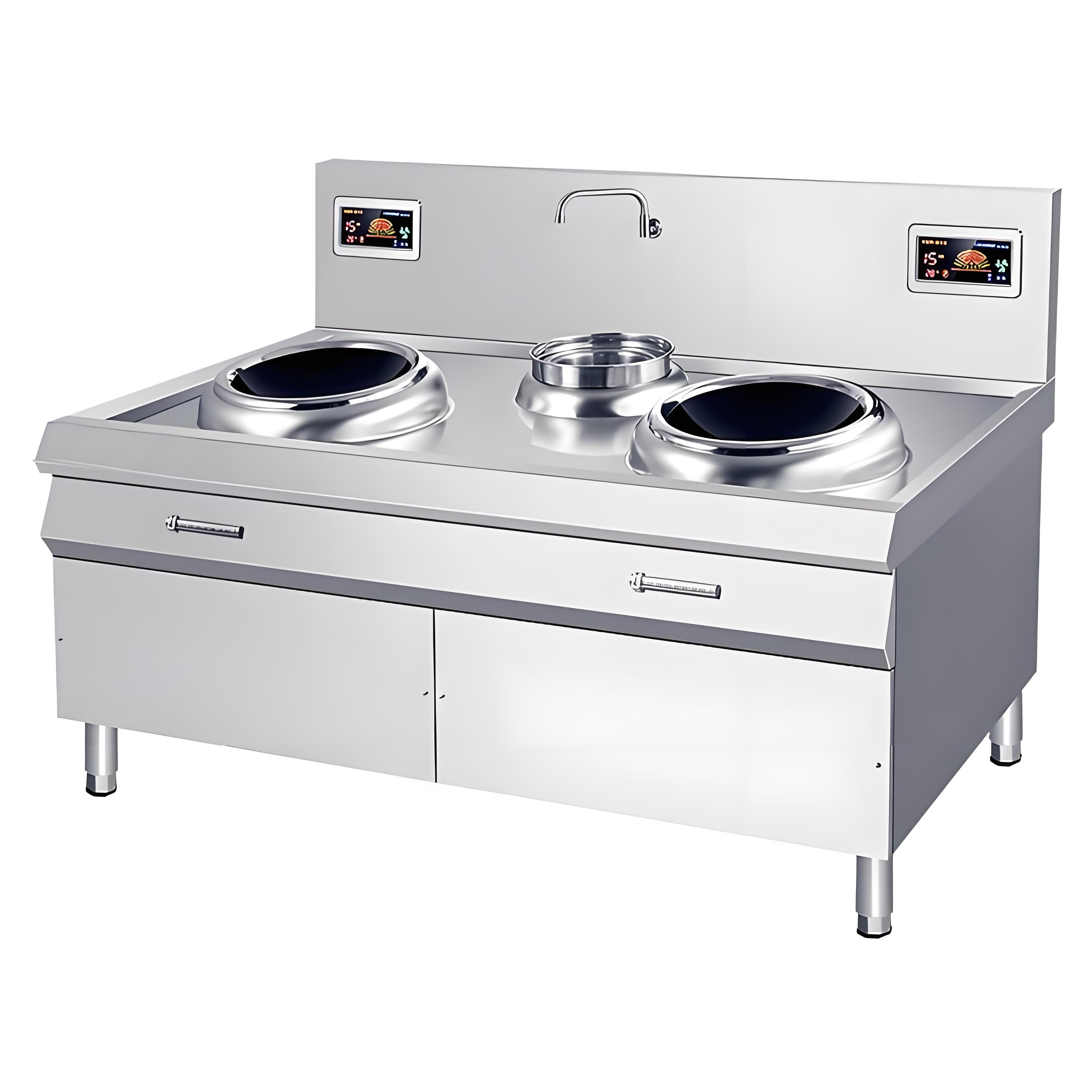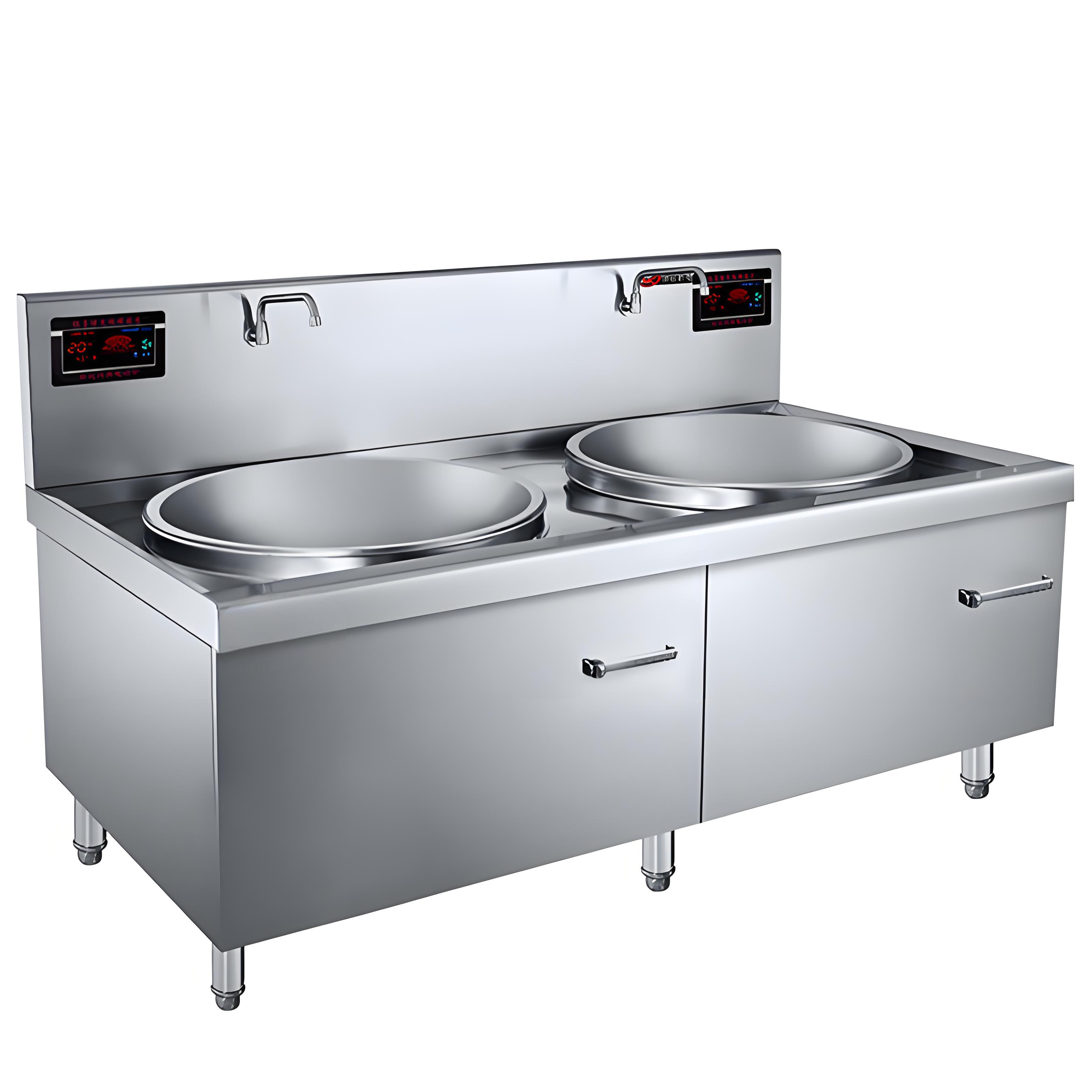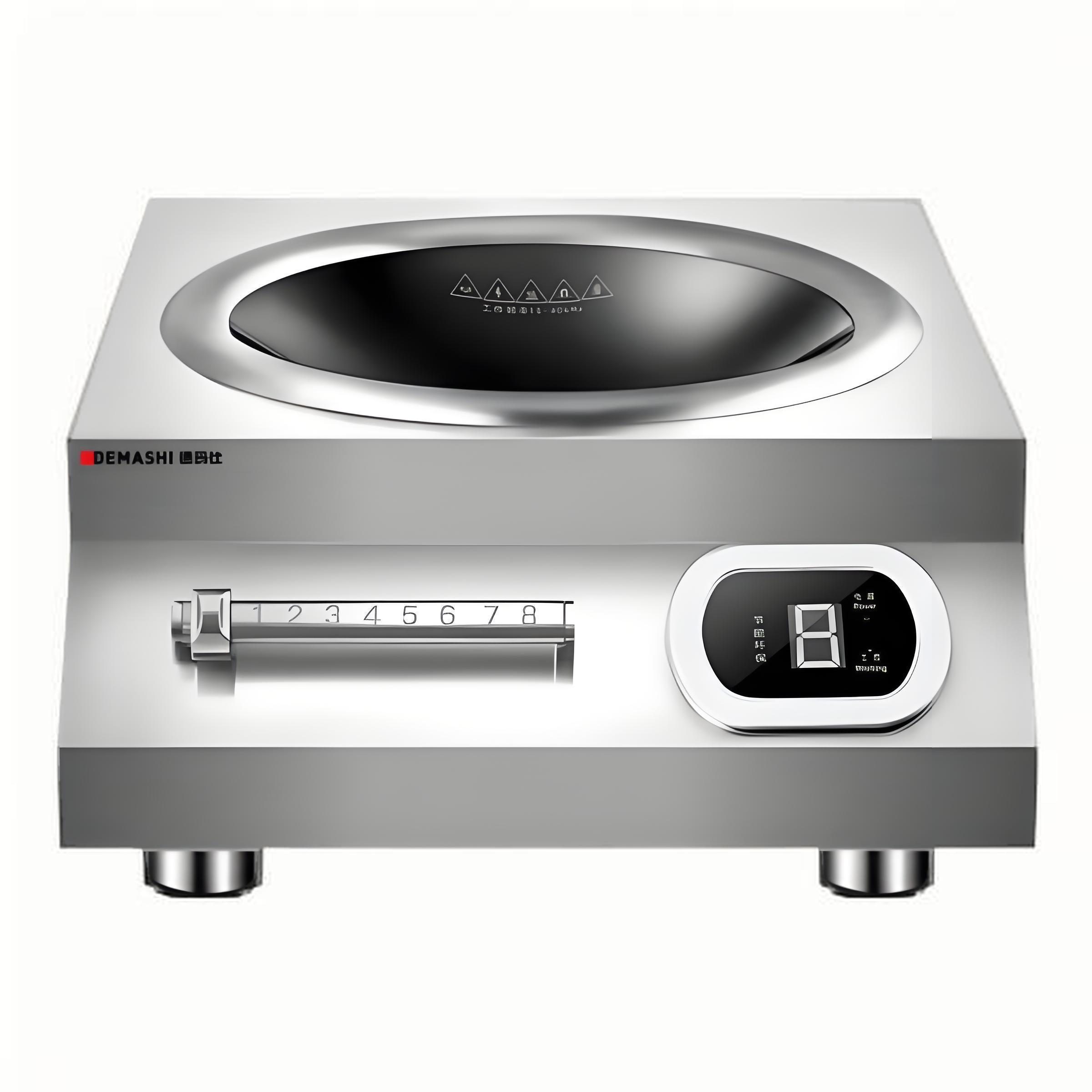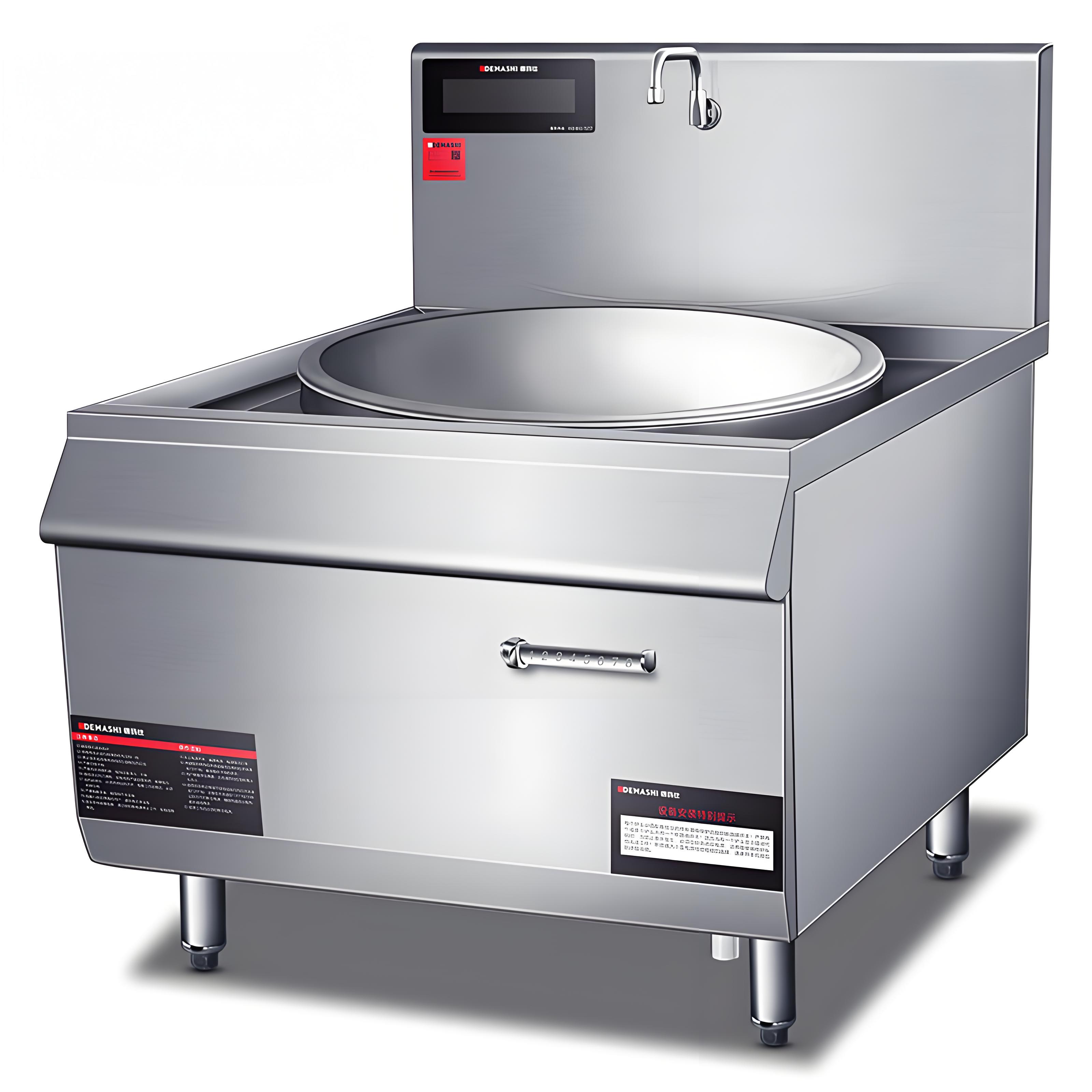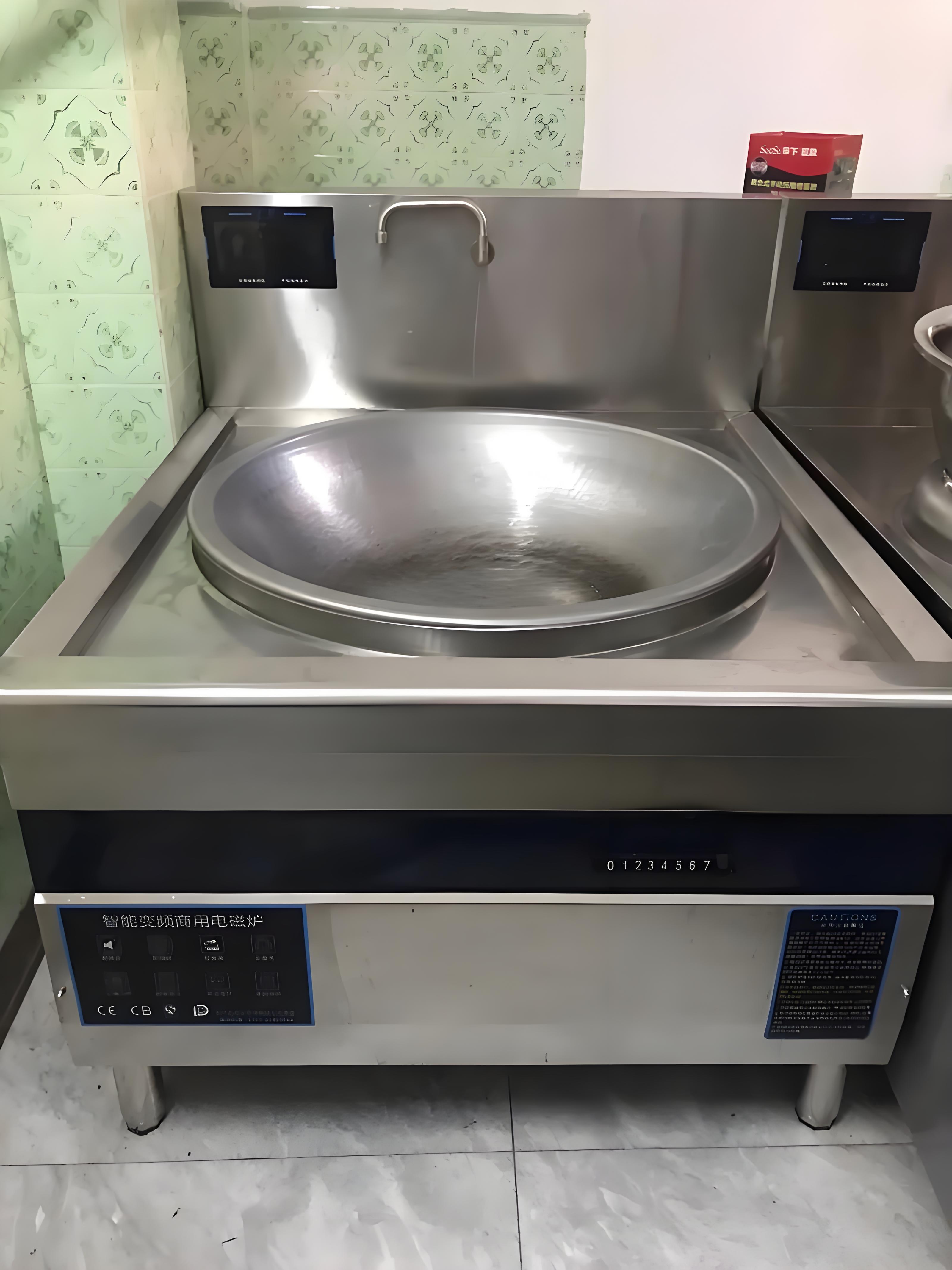As someone who’s spent years testing and recommending kitchen appliances, I’ve seen how induction cooktops have revolutionized cooking with their speed, efficiency, and sleek designs. But when it comes to choosing one, a question I often hear is: What’s the difference between high-end and regular induction cooktops? The answer lies in a mix of performance, features, durability, and design. High-end models can elevate your cooking experience, while regular ones offer solid functionality at a lower cost. In this guide, I’ll break down the key differences, share insights from my experience, and help you decide which is right for your kitchen.
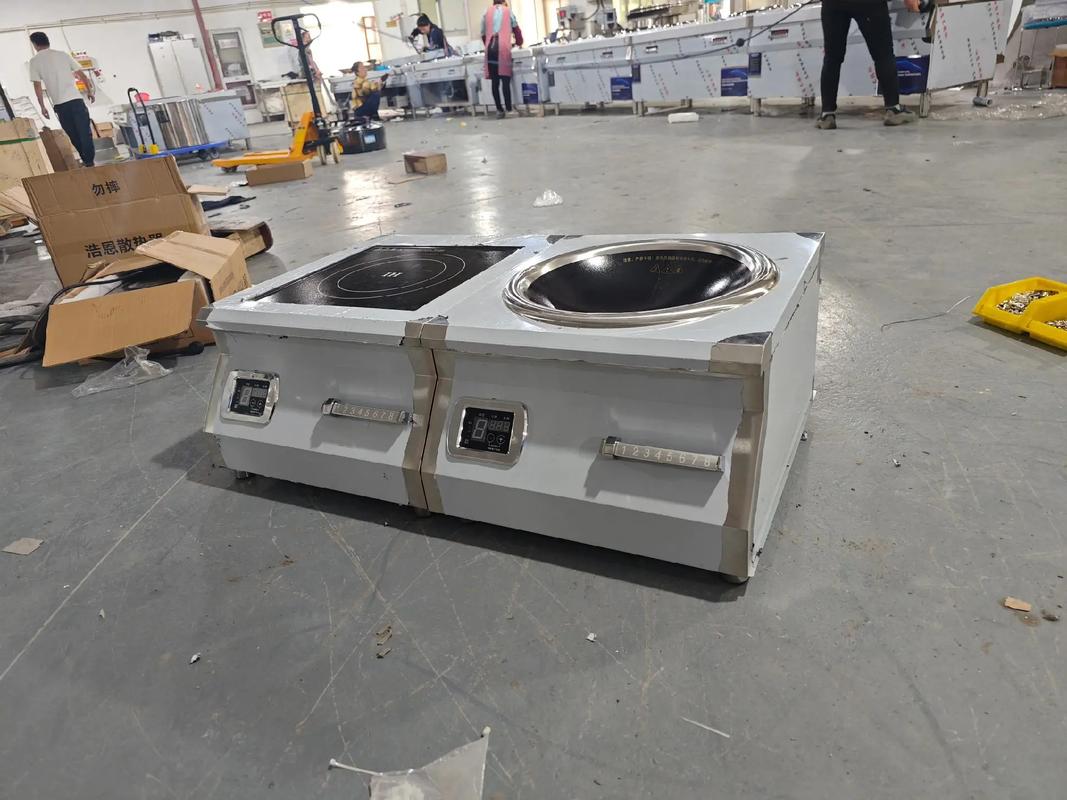
Why Induction Cooktops Are Different
Before diving into the differences, let’s clarify what makes induction cooktops unique. Unlike gas or electric stoves, induction cooktops use electromagnetic fields to heat cookware directly, offering faster cooking, precise temperature control, and energy efficiency. But not all induction cooktops are created equal. High-end models often come with advanced features and superior build quality, while regular models focus on affordability and basic functionality. Understanding these differences can help you choose a cooktop that fits your cooking style and budget.
When I first switched to induction cooking, I started with a budget model. It worked well, but upgrading to a high-end unit later showed me what I’d been missing. Let’s explore the distinctions to help you make an informed choice.
Key Differences Between High-End and Regular Induction Cooktops
The gap between high-end and regular induction cooktops boils down to several factors: performance, features, build quality, design, and price. Here’s a detailed look at each, based on my hands-on experience and industry knowledge.
1. Performance and Power
High-end induction cooktops typically offer higher power output and faster heating. They often have burners with wattages ranging from 3,000-3,700W, compared to 1,800-2,800W for regular models. This means quicker boiling and more responsive temperature changes, which is a game-changer for tasks like searing or stir-frying.
High-End: Advanced models often include power boost modes for rapid heating and precise temperature control (e.g., 1°C increments), ideal for delicate tasks like melting chocolate.
Regular: Basic models provide adequate power for everyday cooking but may lack the precision or speed of high-end units.
I once tested a high-end cooktop’s boost mode, boiling water in under 90 seconds—something my regular model took nearly twice as long to achieve.
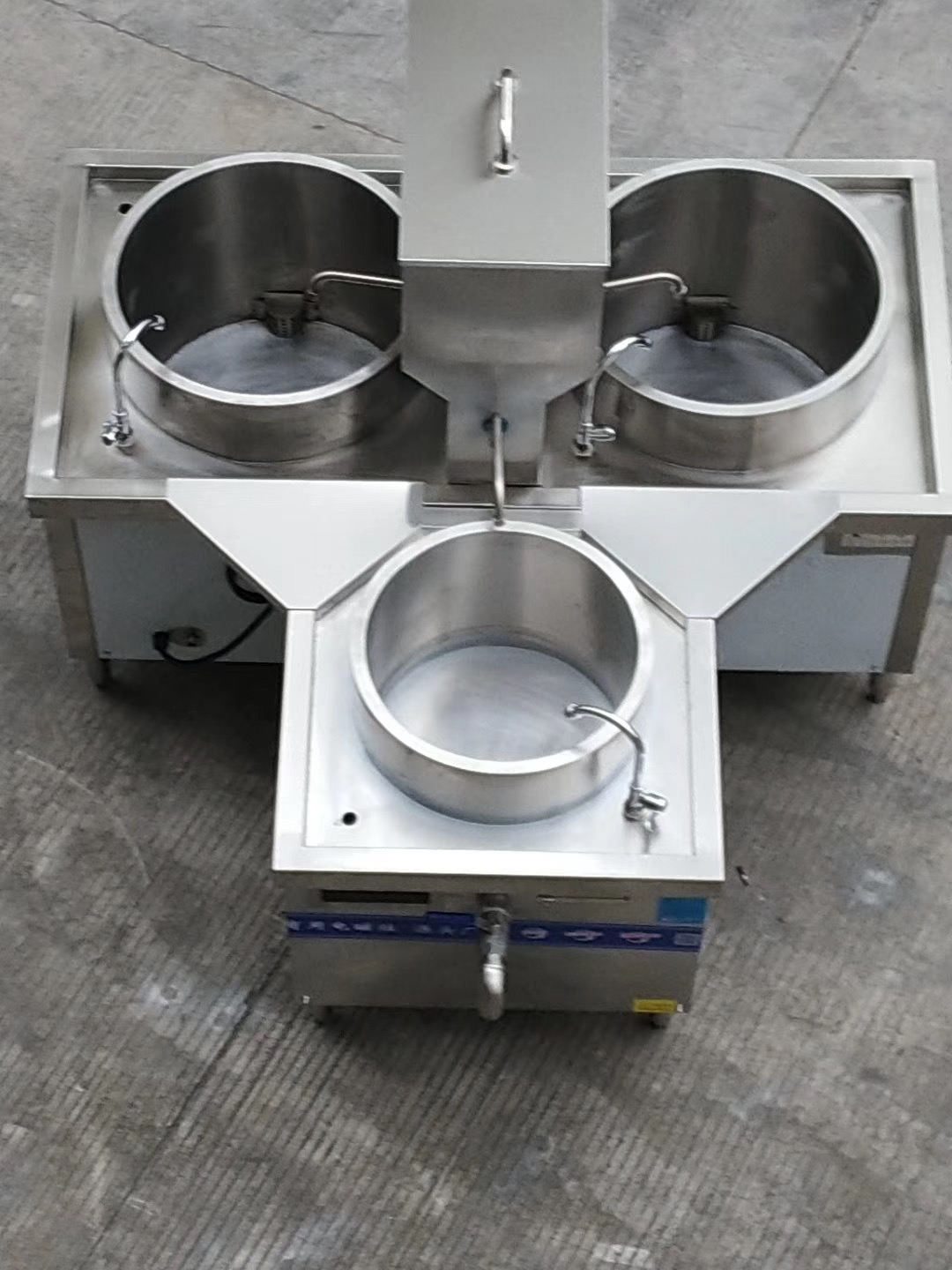
2. Cooking Zones and Flexibility
High-end cooktops often feature flexible cooking zones or bridge burners, allowing you to combine zones for larger cookware like griddles. Regular models typically have fixed zones, limiting versatility.
High-End: Some models detect cookware size and shape, adjusting the heating area automatically. This is perfect for odd-shaped pans or multi-pot cooking.
Regular: Fixed zones work well for standard pots but may struggle with oversized or irregularly shaped cookware.
In a client’s kitchen, I saw how a high-end cooktop’s flexible zones made hosting large dinners a breeze, accommodating a massive griddle for pancakes.
3. Control and Features
High-end models shine with smart features and intuitive controls, while regular models stick to basic functionality.
High-End: Touchscreens, Wi-Fi connectivity, and app integration let you control settings remotely or follow guided recipes. Features like keep-warm modes, timers per zone, and child locks enhance usability.
Regular: Basic touch controls or knobs with preset power levels (e.g., 1-9) are common, with fewer advanced settings.
I once used a high-end cooktop’s app to preheat a burner while prepping ingredients, saving me time during a busy dinner prep.
4. Build Quality and Materials
Durability is a big differentiator. High-end cooktops use premium materials like Schott Ceran glass or stainless steel frames, resisting scratches and heat better than the standard ceramic glass on regular models.
High-End: Thicker glass and reinforced frames withstand heavy use and look sleek for years.
Regular: Thinner glass is functional but more prone to scratches or cracks over time.
I’ve seen high-end cooktops in busy restaurant kitchens last over a decade with minimal wear, while regular models in home kitchens often showed scratches after a few years.

5. Design and Aesthetics
High-end cooktops prioritize sleek, modern designs, often with flush-mount installation or minimalist bezels for a seamless look. Regular models are functional but may have visible edges or simpler designs.
High-End: Frameless designs and customizable zone layouts blend into high-end kitchens.
Regular: Basic black or silver finishes work well but lack the polished aesthetic of premium models.
A client once chose a high-end cooktop for its flush-mount look, which made their kitchen island look like a piece of art.
6. Energy Efficiency and Safety
Both types are energy-efficient, but high-end models often include advanced sensors to optimize power usage and enhance safety.
High-End: Features like pan detection, residual heat indicators, and automatic shut-off improve efficiency and safety.
Regular: Basic safety features like overheat protection are included, but they lack advanced sensors.
I once avoided a kitchen mishap thanks to a high-end cooktop’s auto shut-off when a pot boiled over—something a regular model might not catch.
7. Price
Price is the most obvious difference. High-end cooktops range from $1,500-$4,000, while regular models cost $300-$1,200, depending on size and features.
High-End: Higher cost reflects advanced technology, durability, and aesthetics.
Regular: Budget-friendly but with fewer features and shorter lifespans.
Here’s a table summarizing these differences:
| Feature | High-End Induction | Regular Induction | Key Advantage |
|---|---|---|---|
| Power Output | 3,000-3,700W, boost modes | 1,800-2,800W | Faster, more precise cooking |
| Cooking Zones | Flexible/bridge zones | Fixed zones | Versatile for large or odd cookware |
| Controls/Features | Touchscreen, smart features | Basic touch/knob controls | Enhanced usability, automation |
| Build Quality | Premium glass, durable frames | Standard glass, basic frames | Longer lifespan, scratch resistance |
| Price Range | $1,500-$4,000 | $300-$1,200 | Value vs. premium performance |
Real-World Performance Differences
To illustrate, let me share a few experiences:
Cooking Speed: In a test kitchen, I used a high-end cooktop to sear a steak in half the time of a regular model, thanks to its higher wattage and boost mode.
Precision Cooking: A high-end model’s precise temperature control let me temper chocolate without a double boiler, something my regular cooktop struggled with.
Durability: A client’s high-end cooktop looked pristine after five years of heavy use, while a regular model in my own kitchen showed minor scratches after two years.
These differences matter if you cook frequently or need professional-grade performance.

Who Should Choose High-End vs. Regular?
Based on my experience, here’s how to decide:
High-End Induction Cooktops:
Ideal for frequent cooks, culinary enthusiasts, or professional kitchens.
Best for large households or those who use oversized cookware.
Worth the investment if you value smart features, durability, and aesthetic appeal.
Example: A chef friend upgraded to a high-end model for its flexible zones and hasn’t looked back.
Regular Induction Cooktops:
Perfect for budget-conscious buyers, casual cooks, or small households.
Great for basic cooking tasks like boiling, frying, or simmering.
Suitable for rentals or starter homes where cost is a priority.
Example: My first cooktop was a regular model, and it handled daily meals fine for years.
I once advised a client with a small apartment to stick with a regular model, saving them $1,000 for features they wouldn’t use. Conversely, a family of six went high-end and loved the flexibility for their large gatherings.
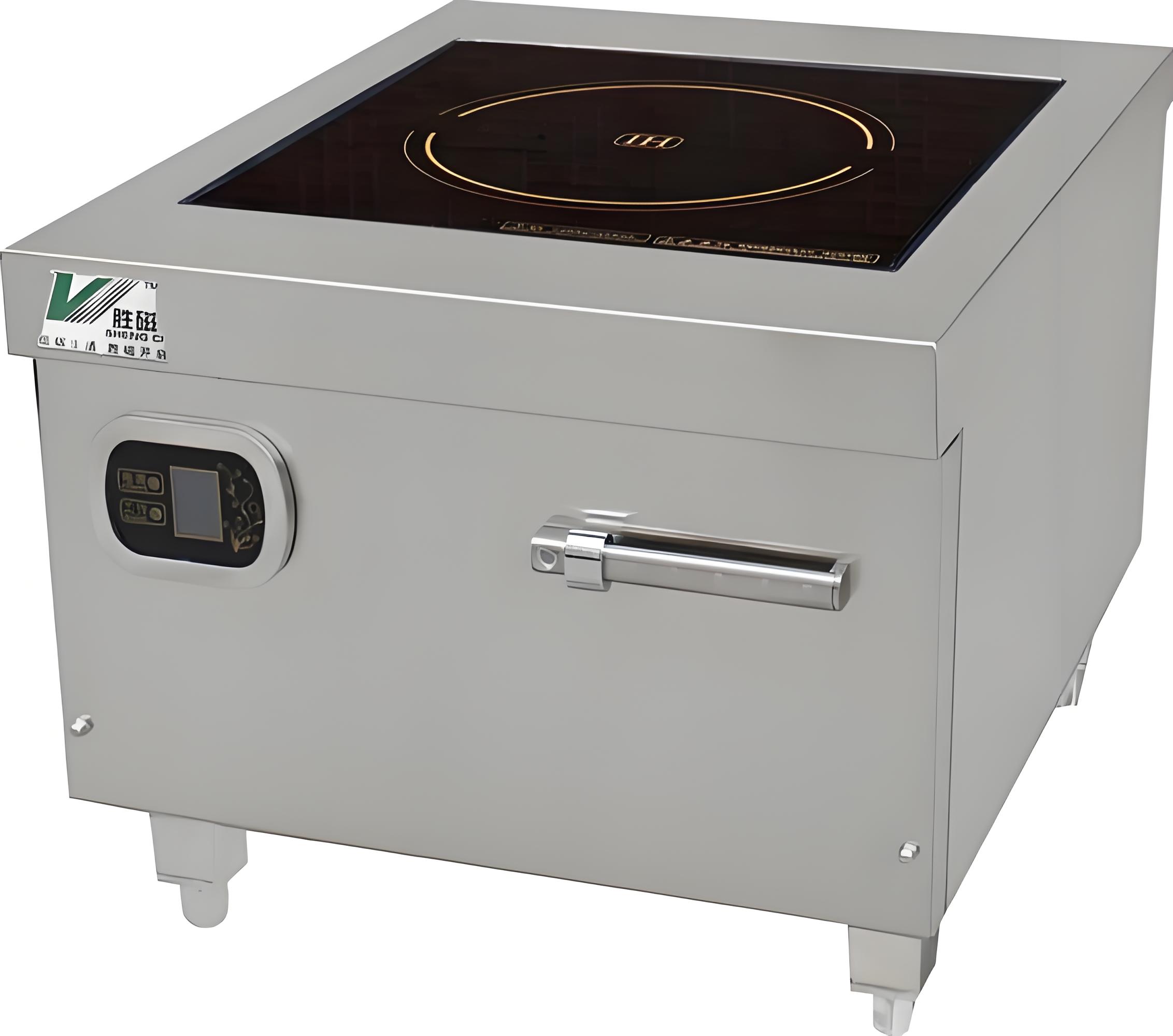
Practical Tips for Choosing and Using Induction Cooktops
Whether you go high-end or regular, these tips from my experience will help you get the most out of your cooktop:
Check Cookware Compatibility: Induction requires magnetic cookware (e.g., cast iron, stainless steel). Test with a magnet—if it sticks, it works.
Consider Kitchen Space: High-end models are often larger (30-36 inches wide), while regular ones come in compact sizes (e.g., 24 inches) for small kitchens.
Test Features: If buying high-end, try the touchscreen or app controls in a showroom to ensure they’re user-friendly.
Maintain the Surface: Clean with a damp cloth and mild detergent. Avoid abrasive scrubbers to prevent scratches, especially on regular models.
Budget for Accessories: High-end cooktops may require specialized cookware or installation (costing $100-$500), while regular models are plug-and-play.
I once helped a client avoid a costly mistake by checking their cookware compatibility before buying a high-end model, saving them from replacing their entire set.
Maintenance and Longevity
Both types are low-maintenance, but high-end models tend to last longer:
High-End: With premium materials, expect 10-15 years of use with proper care. Clean regularly and avoid heavy impacts on the glass.
Regular: Typically lasts 5-10 years, with more frequent cleaning needed to maintain the surface.
I’ve seen high-end cooktops in commercial kitchens endure daily abuse for over a decade, while regular models in homes often need replacement sooner due to wear.
Cost-Benefit Analysis
Here’s a quick breakdown of costs:
High-End: $1,500-$4,000 upfront, plus $100-$500 for installation or cookware. Long-term savings come from durability and energy efficiency.
Regular: $300-$1,200, with minimal additional costs. Ideal for short-term use or budget constraints.
For a family that cooks daily, the high-end model’s longevity and features justify the cost. For occasional cooks, a regular model is more than enough.
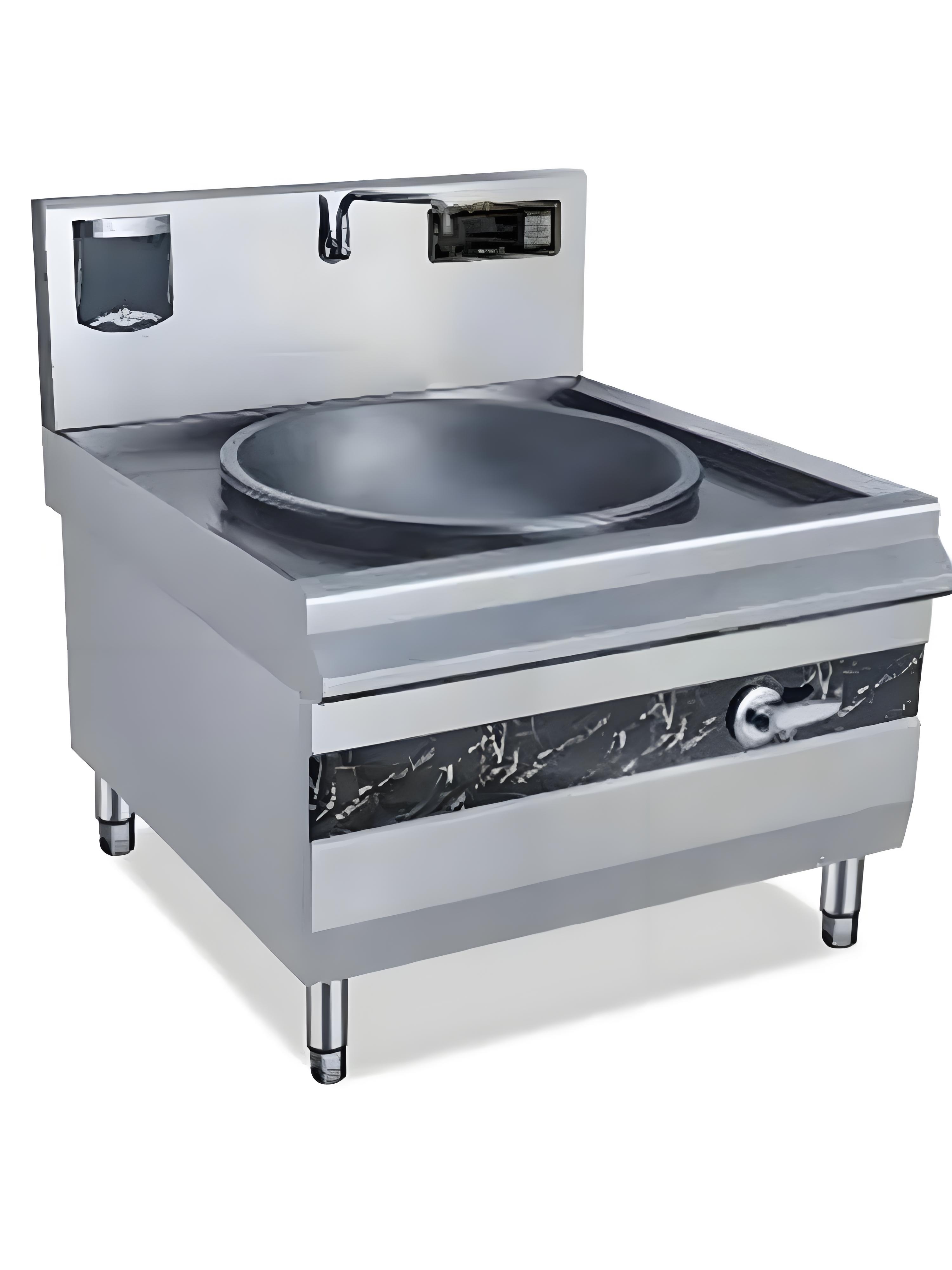
Real-World Examples from My Experience
High-End in a Busy Kitchen: A client with a large family chose a high-end cooktop with flexible zones. It handled multiple pots for holiday meals effortlessly, lasting years without issues.
Regular in a Rental: For a small apartment, I recommended a compact regular model. It was affordable, easy to install, and met the tenant’s basic cooking needs.
Restaurant Upgrade: A cafe I consulted for switched to a high-end model, cutting cooking times and impressing customers with its sleek look.
These examples show how the right choice depends on your needs and kitchen setup.
Conclusion: High-End or Regular—Which Suits You?
High-end induction cooktops offer superior power, advanced features, and premium durability, making them ideal for serious cooks or high-traffic kitchens. Regular models provide reliable performance at a lower cost, perfect for casual users or budget-conscious buyers. By weighing your cooking habits, kitchen space, and budget, you can choose a cooktop that enhances your culinary experience.
If you’re torn between the two or need help picking the perfect model, I’m happy to share more insights from my years in the field. Let’s find the cooktop that makes your kitchen shine!
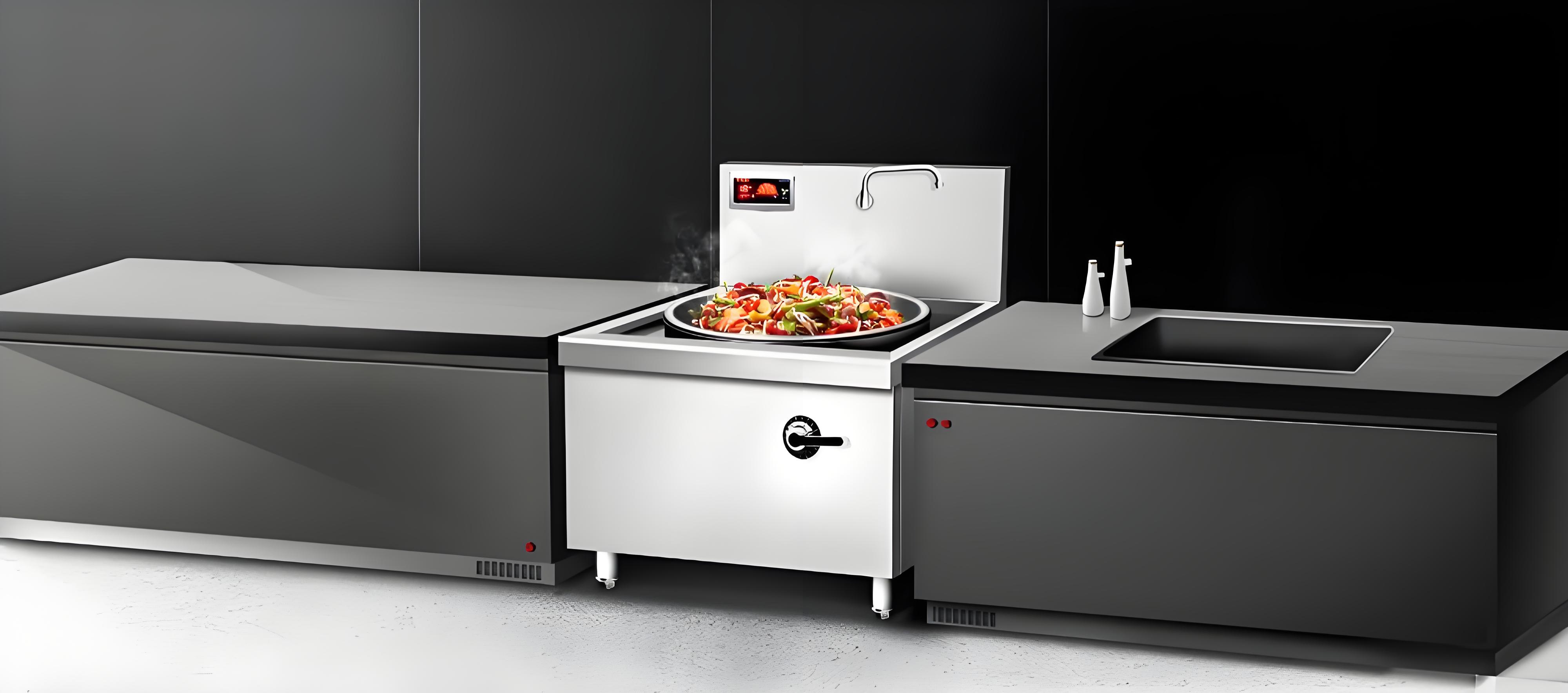
Frequently Asked Questions
1. Are high-end induction cooktops worth the extra cost?
For frequent cooks or those needing flexible zones and smart features, high-end models ($1,500-$4,000) offer better performance and longevity. Regular models ($300-$1,200) suffice for basic cooking.
2. Can regular induction cooktops handle heavy cooking tasks?
Yes, but they’re slower (1,800-2,800W) and less precise than high-end models (3,000-3,700W). They’re fine for boiling or frying but may struggle with professional-grade tasks.
3. Do high-end cooktops require special installation?
Some need hardwired installation (costing $100-$500), while regular models are often plug-in. Check electrical requirements before buying.
4. How do I maintain an induction cooktop’s surface?
Clean with a damp cloth and mild detergent. High-end models with premium glass resist scratches better, but avoid abrasive scrubbers on both types.
5. Are smart features on high-end cooktops practical?
Features like app control or precise temperature settings are useful for complex recipes or multitasking, but casual cooks may not need them.
